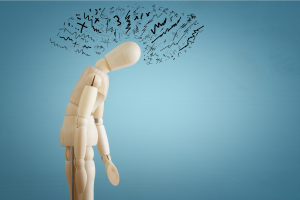Body Neutrality: Making Body Appreciation More Authentic
Is feeling good better than looking good? To be clear, I personally would love both. But only one can be my absolute priority, and focusing on how I feel is better for my mental health.
Do you remember the show “Star Search?” It was the first competition show, before “The Voice” and all the rest. One image from that show got seared into my brain and has informed me ever since. It points to the power of a new movement called “Body Neutrality” and its novel approach to ‘body appreciation.’
The term “body neutrality” has only been around since the 2010s. You might have heard of “body positivity.” That sounds better, right? Probably not.
In a Cleveland Clinic article about the difference between body positivity and body neutrality, Psychologist Susan Albers notes that “Body positivity is a subset of toxic positivity. Some feel that it blames people for how they feel based on their mindset. It can also push people into trying to feel something that they don’t.”
Body neutrality, on the other hand, she says, is “neither loving nor hating your body. It’s based on the notions of acceptance and having respect for one’s body rather than love.” One of body neutrality’s early proponents, an eating disorder specialist named Anne Poirier, defined body neutrality as “prioritizing the body’s function and what it can do rather than its appearance.”
Fostering healthier approaches to body perception has become a vital social priority. Depression and eating disorders have risen dramatically for adolescents in recent years. A study called Project Body Neutrality was conducted to test the impact of “functionality appreciation” (a facet of body neutrality) on adolescent body image and depression. Adolescents who participated reported “medium to large reductions in hopelessness and body dissatisfaction, and large increases in functionality appreciation…”
I got a glimpse of this empowering way to perceive bodies from that Star Search episode. Here’s what I saw:
All the winners gathered on stage: the “TV Spokesmodel,” the dance troupe, the comedian and the singer. The model, with her perfect makeup, socially coveted body shape, coiffed hair and sexy outfit, was standing still, pinched in her perfection. While right next to her, the dancers, in their variously shaped bodies, with hair pulled straight back, negligible makeup and functional outfits, were VIBRATING WITH JOY. I was stunned by how much more beautiful their radiant exuberance was than the posed perfection of the model.
In my experience, the way I feel from the inside has everything to do with my confidence. I like to think I am not my age or my body. I am my ENERGY. Ironically, the better I feel from the inside out, the more I like my reflection in the mirror. But when I focus too much on how I look, I lose that confidence. It’s like I’m trying to squeeze myself into a box, like the awkward model.
In a NY Times article about body neutrality, Charlotte Cowles writes that through the lens of body neutrality, exercise is about the pleasure of moving, rather than to achieve a visual result later. In fact, studies show that people enjoy exercise much more when their motivation is feeling better that very day, rather than a long-term goal of changing their body shape.
Where “body positivity” may unintentionally backfire, body neutrality enhances the potential for self-compassion. For example, if you look in the mirror and say, “I LOVE the way my arms look,” but inside that feels like a lie, it will leave you feeling worse about your arms. Now you’re in body negativity. A body neutral approach would be to say, “I love how my arms help me swim. I love how they’re getting stronger each day.” This leaves you feeling empowered about your body’s function, but neutral about the way your arms “look.”
I personally see no downside to this approach. As Dr. Albers says, body neutrality “acknowledges that your body is only one part of who you are — not the totality. It also shouldn’t dominate how you feel about yourself…”
And that gorgeous vibrance I saw on the show isn’t exclusive to dancers—I’ve seen it in all kinds of people; in moments of mastery, connection with loved ones, creative expression or just being. Perhaps it’s the luminescence that emerges from simply inhabiting our aliveness without self-judgment.
With self-compassion as its byproduct, I am very hopeful that body neutrality will gain traction in our culture, especially with young people. In an era of unprecedented challenges, nothing could be more important than kindness, especially the kindness we show ourselves.









